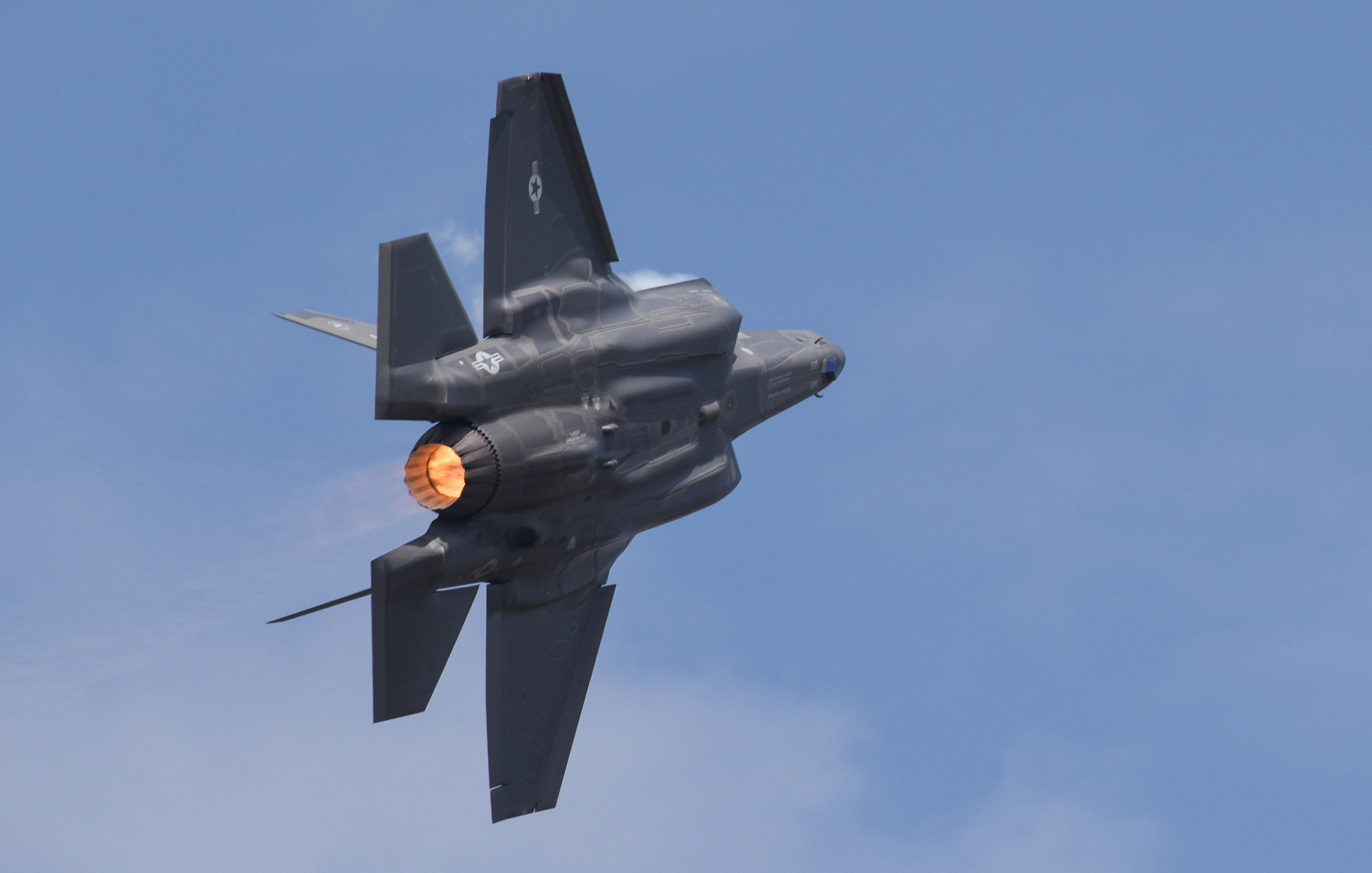
A USAF pilot demonstrates the flight capabilities of an F-35A Lightning II during the 2018 Royal International Air Tattoo at RAF Fairford, United Kingdom, on July 13, 2018. Air Force photo by TSgt. Brian Kimball.
RAF FAIRFORD, ENGLAND—The United Kingdom’s new F-35B strike fighters were on full display over the last week as the Royal Air Force celebrated its centennial.
Three of the four F-35s, which were delivered one month ago, flew over London as part of the Royal Air Force’s 100th anniversary flypast. Three days later, one of the strike fighters put on an impressive performance at the Royal International Air Tattoo, hovering over the center of the flightline at RAF Fairford, England, demonstrating its vertical takeoff and landing capabilities.
“The F-35 is an enormous force multiplier. The UK just received their first four F-35Bs [in June] and miraculously they got three of the four aircraft airborne” for the anniversary flyover, one more than originally planned, said US Air Forces in Europe boss Gen. Tod Wolters.
Wolters said the F-35 has been a centerpiece of the bilateral discussions he’s participated in here at the air tattoo, saying the fifth generation fighter is a “game changer” that will improve the “responsiveness, resilience, and lethality” across all domains for both NATO and on the European continent.
The British F-35Bs are assigned to RAF Marham, which is less than 20 nautical miles from RAF Lakenheath, where the US Air Force will beddown its own F-35As beginning in 2021. Marham is expected to declare initial operational capability with its F-35s in December.
The goal is to ensure both USAF and RAF aircrew and aircraft are able to operate seamlessly together on Day One, said Wolters, which is why joint planning has been underway for the last three years.
There are regular “group meetings” at the major and lieutenant colonel level, as well as at the one-star and three-star levels, to discuss the capabilities of both systems.
“We want to make sure the lines of communication—from actual execution to simulator training—are protected between Marham and Lakenheath,” said Wolters.
Though he wouldn’t provide an exact timeline, he said “very, very” soon you will find USAF F-35A pilots flying in simulators at Lakenheath, at the same time that RAF F-35B pilots are flying in a sim at Marham, and both pilots will be talking to each other as they train.
“We’re working many contracts to make sure it’s a successful transition,” said Wolters.